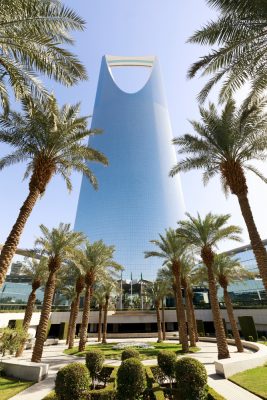This country is mysterious, and its capital is exciting. Saudi Arabia is one of those regions on the globe that is often misunderstood. So of course it is nonsense to believe that every Saudi is an oil sheikh. It is true that most of the inhabitants of the metropolis of Riyadh are strict in their faith, but not only the super-rich but also quite normal people live here. This city is in search of the balance between preserving its rich culture and advancing a new era. Riyadh is undoubtedly a splash of colour of a country that has closed itself off to tourism for a very long time and successfully. This city is full of contrasts and is worth a visit for that reason alone. It is not located on one of the coasts of the kingdom, but inland. Nevertheless, the metropolis on the edge of the desert is the navel of this country on the Arabian Peninsula.
Once a trading post on the Silk Road
For a long period of history, Riyadh was an important trading station on the legendary Silk Road, and if you stroll through the wide streets of Saudi Arabia’s capital today, you will discover several historic buildings between the gigantic skyscrapers. Holidaymakers should go to one of the various viewing platforms to get an overview. The slender minarets of the mosques stand out from the sea of houses, because Islam shapes life in Riyadh. Even the ultra-modern setting of this city and the wealth of technical know-how that can be found there does not compete with the intense faith of the people. When it comes to the ban on alcoholic beverages, there are no two opinions among the residents in Riyadh either. The rules are strict, but the people in the capital are open-minded and hospitable to strangers.
On the edge of the desert, a giant of steel and stone

Riyadh is the Arabic word for “garden”. And for the people in this city, the metropolis of millions looks like a green oasis on the edge of the desert, just like in the old days. That forbidding emptiness that the French poet and mystic Edmond Jabès once said was like a writing and that there was a surprising sign in every grain of sand. Anyone who leaves the slopes of this huge desert in the heart of Saudi Arabia and perceives the striking backdrops of Riyadh’s skyscrapers from afar will be almost overwhelmed by this contrast. This will also happen to holidaymakers who decide to take one of the desert trips offered in Riyadh. It was the al-Saud family who chose Riyadh as their seat in 1924. What was once just a walled garden on the edge of the desert has evolved over the course of history into an ultra-modern giant made of steel and stone.
Al Olaya – the exclusive business district

Al Olaya is Riyadh’s exclusive business district. This is where the city’s most interesting skyscrapers are located: the Kingdom Centre, which rises more than three hundred metres into the mostly blue sky and whose two towers are connected by a 65-metre-long and fully glazed bridge. Anyone who takes the elevator there to lofty heights should be free from giddiness. Another masterpiece of architecture is the Al Faisaliyah Centre in the shape of an obelisk. In Riyadh’s business district, many luxury global brands have been given their showroom. But it is also teeming with first-class restaurants. But the rustic shawarma restaurants can also be found here.
Historic Rolls Royce in the Royal Palace
In the capital of Saudi Arabia, Fort Masmak on Thumairi Street is also worth seeing. It was built in the middle of the 19th century, was once built exclusively of mud bricks and still shimmers a little reddish after nightfall. Today, the former fortification marks the center of the old city of Riyadh. This is a testimony to the history of this city. Within the walls there is now a mosque and a museum. The Murabba Palace is the traditional seat of the royal Saud dynasty. It is located about two kilometers away from the old town. In the King Abdul Aziz Memorial Hall, some personal belongings from the monarch’s possession can be seen. Among other things, a collection of old-fashioned Rolls Royces.
The National Museum resembles a treasure trove
The National Museum of Saudi Arabia is a veritable treasure trove. The exhibits from several Arab countries are explained by films, among other things. After a tour of the city, a visit to the National Zoo of Riyadh is also worthwhile. It was opened in 1957 and initially had the task of housing the animals that the royal family received as gifts from many parts of the world. Today, this is home to around 1,400 animals. If you don’t want to walk the extensive area, you can use a small train there. Holidaymakers should know that there are separate visiting days for women and men at the zoo .


